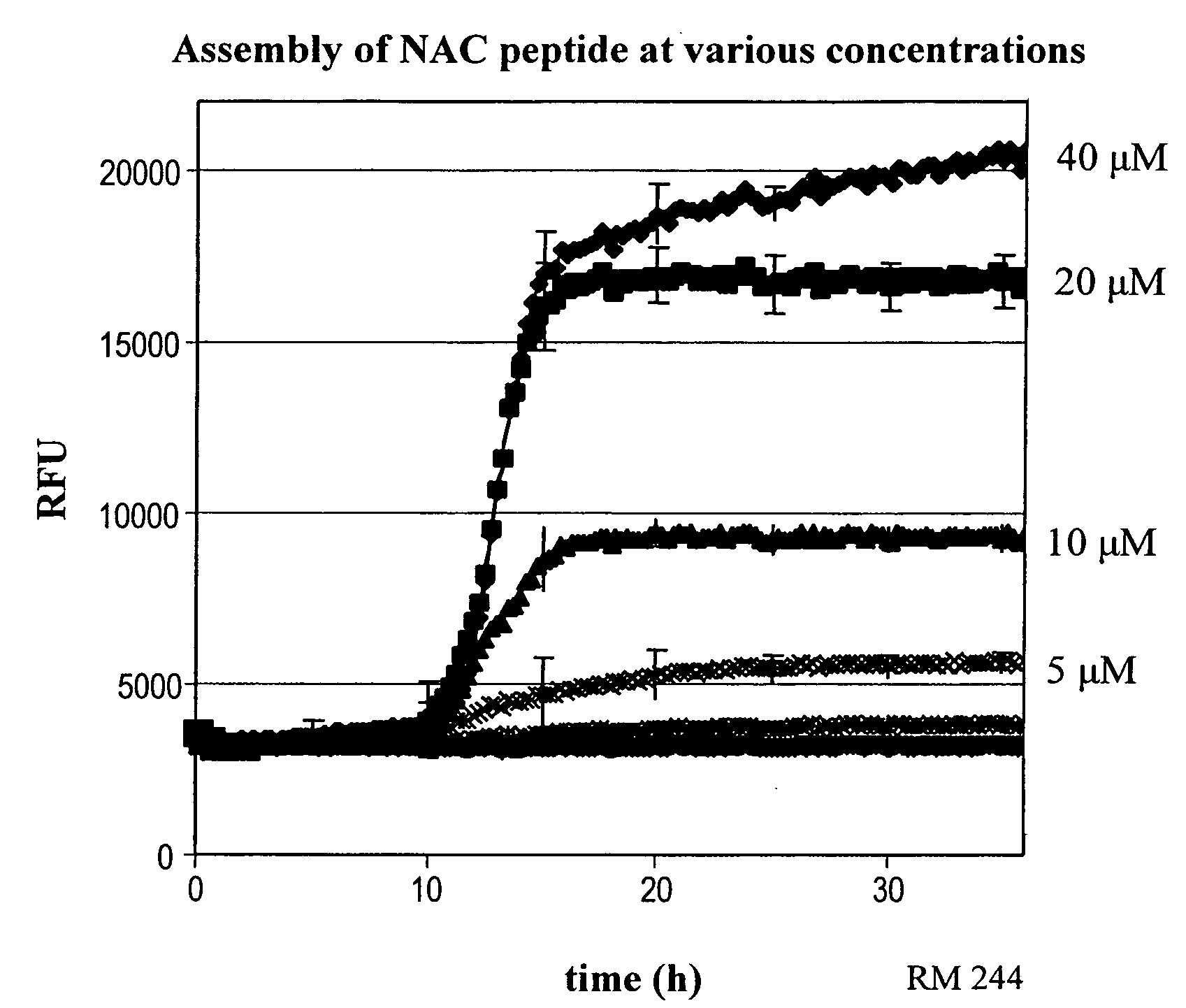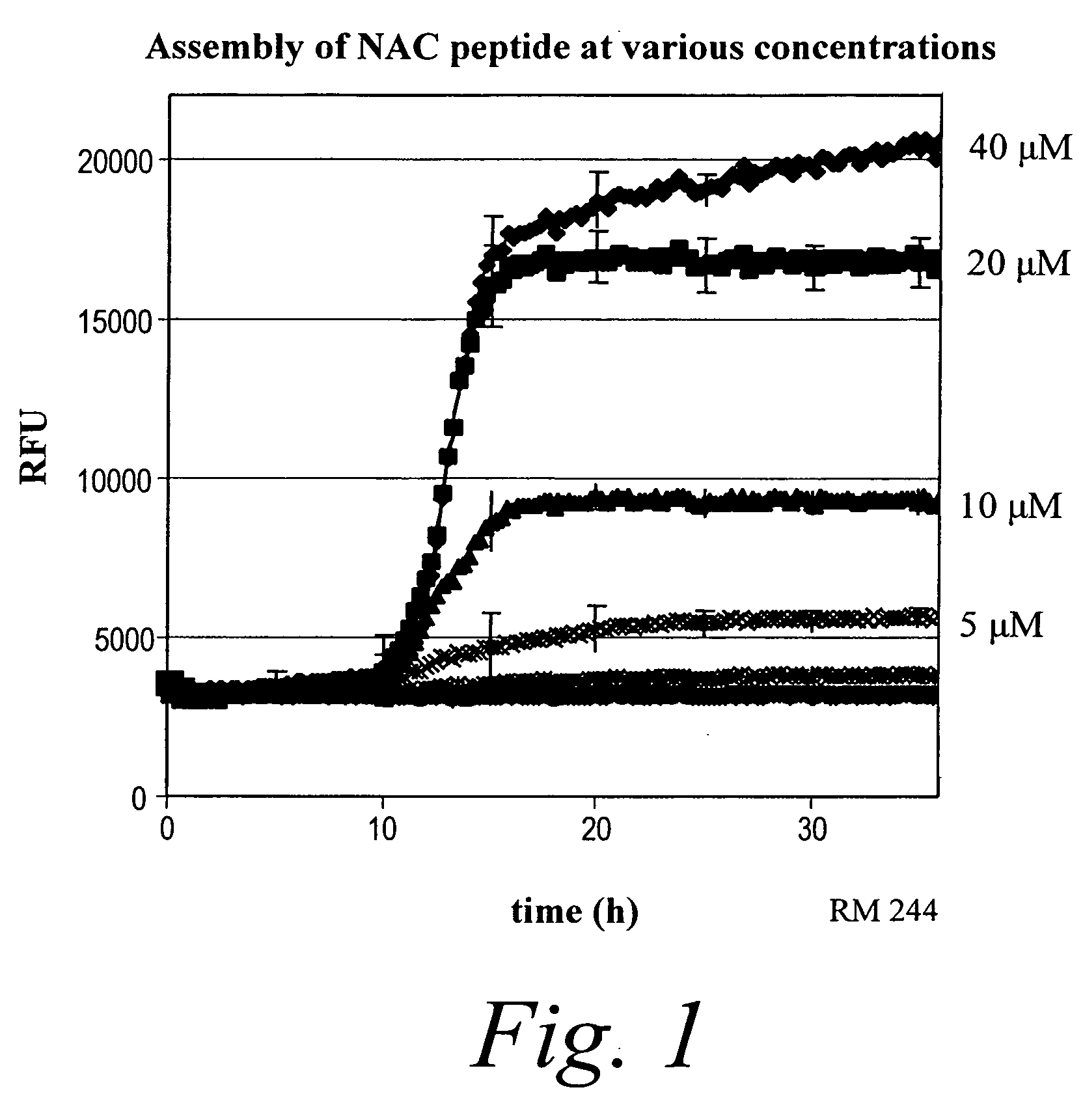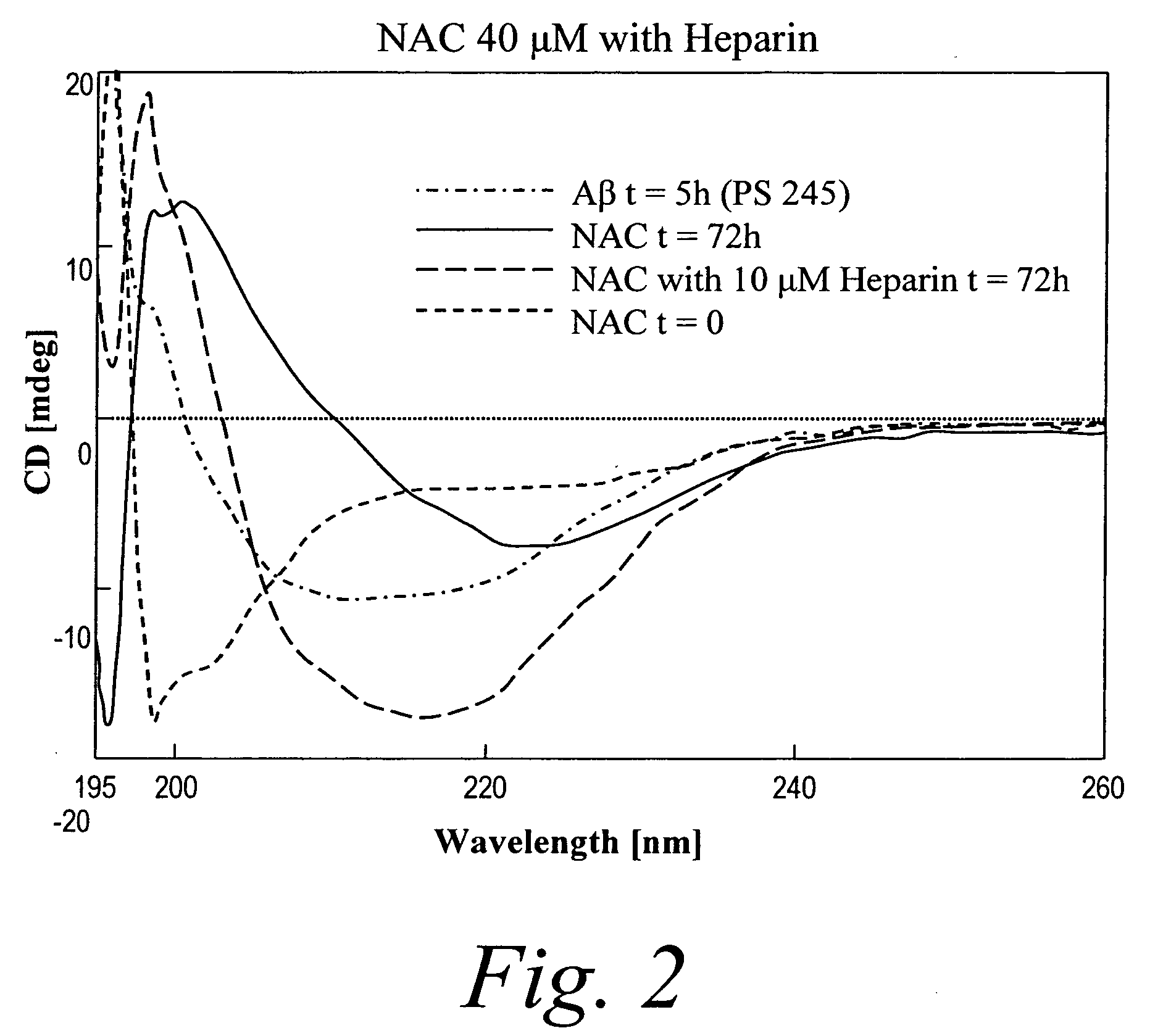Methods for treating protein aggregation disorders
a protein aggregation and disorder technology, applied in the field of protein aggregation disorders, can solve the problems of generating a substantial burden of defective polypeptides, unable to adopt and maintain proper structure of polypeptides, and major threat to cell function and viability, so as to prevent cellular damage and death, facilitate clearance and/or inhibit toxicity, the effect of treating or ameliorating disorders
- Summary
- Abstract
- Description
- Claims
- Application Information
AI Technical Summary
Benefits of technology
Problems solved by technology
Method used
Image
Examples
example 1
Assays used to Detect a Detrimental Protein Aggregate Associated with a Protein Aggregation Disorder
[0422] Assays for Detecting a Detrimental Protein Aggregate Associated with the Detrimental Accumulation of NAC
[0423] Preparation of NAC Peptide
[0424] As discussed herein, the acronym NAC refers to a non-amyloid component of the amyloid placques found inADpatients, specifically, a 35 amino acid peptide corresponding to residues 61 to 95 of the α-synuclein protein. NAC peptide was synthesized by Fmoc tertiary butyl chemistry on a Protein Technologies, Inc. peptide synthesizer with a purity of >98%. The peptide content was determined by amino analysis and found to be 71.6%.
[0425] Preparations of NAC may contain aggregated material. To eliminate these aggregates and monomerize the peptide, this disaggregation / filtration procedure was adapted from the work of Walsh and Colleagues (J Biol Chem. 1997 Aug. 29; 272 (35):22364-72). The method consists of sonicating the peptide in 1,1,1,3,3...
example 2
Use of the Thioflavin T Assay to Determine that Isolated NAC Forms β-Sheets
[0436] Experiments performed show that Thioflavin T (ThT) could be used for both high throughput and confirmatory work using the NAC peptide. Fluorescent signal indicative of β-sheet formation appeared starting at 10 hours of incubation (FIG. 1). The intensity of the fluorescent signal was directly related to the concentration of the NAC in the solutions and became maximum at 30 μM NAC. A similar ThT profile with a T1 / 2 (time required to obtain a signal equal to half the maximal signal obtained) of ˜15 hours was observed (in 96 well plate format).
example 3
Circular Dichroism and Electron Microscopy of NAC Peptide Conformation
[0437] Circular dichroism analysis (FIG. 2) of NAC peptide conformation after 10-72 hours of incubation presented a minimum at 227 nm reminiscent of that observed with regions rich in α-helices. In presence of heparin the CD spectrum of NAC after incubation displayed a clear minimum at 218 nm typical of a β-sheet conformation. The appearance of NAC fibers was followed by Electron Microscopy (FIG. 3). Presence of heparin clearly promotes a conformational change and favors rich β-sheet content which facilitates aggregate / fibril formation (FIG. 2). This result indicates that glycosaminoglycans do participate in the oligomerization / fibril formation process of NAC and validates the approach of using GAG-mimetic compounds as a means to prevent oligomerization of NAC and the formation of toxic aggregates. This observation is supported by EM analysis where NAC peptides appeared to form longer and more interwined fibers i...
PUM
| Property | Measurement | Unit |
|---|---|---|
| molecular mass | aaaaa | aaaaa |
| concentration | aaaaa | aaaaa |
| particle size | aaaaa | aaaaa |
Abstract
Description
Claims
Application Information
 Login to View More
Login to View More - R&D
- Intellectual Property
- Life Sciences
- Materials
- Tech Scout
- Unparalleled Data Quality
- Higher Quality Content
- 60% Fewer Hallucinations
Browse by: Latest US Patents, China's latest patents, Technical Efficacy Thesaurus, Application Domain, Technology Topic, Popular Technical Reports.
© 2025 PatSnap. All rights reserved.Legal|Privacy policy|Modern Slavery Act Transparency Statement|Sitemap|About US| Contact US: help@patsnap.com



